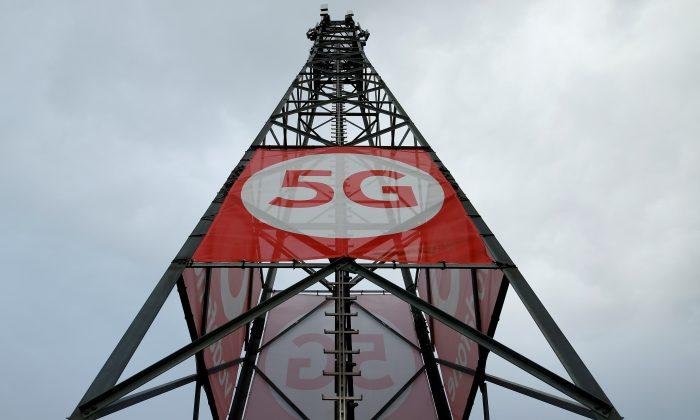The U.S. military’s Defense Innovation Board (DIB) warned Congress that China’s fifth generation telecommunications design will directly interfere with U.S. weapons systems.
Mobile technology upgrades have occurred about every ten years. Fourth generation long-term evolution (4G LTE) that began deploying in 2010 provided about 10 times faster data speeds than 3G, enabling new military applications and launching a commercial bonanza for Apple, Google, Facebook, Amazon, Netflix, and countless other businesses.
The military 5G upgrade will “improve intelligence, surveillance, and reconnaissance systems and processing; enable new methods of command and control; and streamline logistics systems for increased efficiency.” Commercial 5G upgrade is expected to support interconnected or autonomous devices, such as smart homes, self-driving vehicles, precision agriculture systems, industrial machinery, and advanced robotics.
Technology companies aggressively seek first-to-market status in order to influence adoption of a single technical standard to help sell equipment globally, achieve economies of scale, and reduce equipment manufacturing costs.
Armed with the new standard, China’s Huawei and ZTE blended Sub-6 spectrum with existing 4G systems’ capabilities for quicker operational roll out and initially higher interruption reliability to release a 30 percent cheaper 5G systems design.
A 2018 Deloitte Consulting study warned that China under its national plan was already collaborating with international partners to test new equipment and technology solutions to prepare for a 5G deployment in 2020. China had outspent the United States by $24 billion to build 320,000 more 5G enabled domestic cell sites and 10,000 foreign 5G operable base stations that combine 4G, Sub-6 and mmWave spectrums.
IoT subject matter expert James Mulvenon, Ph.D. testified to Congress in 2018 regarding military and commercial security issues associated with China’s 5G efforts. He highlighted three concerns: “Supply chain challenges and threats posed by China-based production of IoT devices deployed in the United States; post-installation maintenance and upgrades of those IoT devices as vectors for malware and exfiltration; and recent Chinese laws that create the legal basis for extraterritoriality of Chinese telecommunications companies and potential intercept access to U.S. communications infrastructure.”
Mulvenon stated that with Huawei signing 25 telecommunication firm agreements around the world to test its 5G technologies and China Mobile had begun the world’s largest 5G trial, Chinese IoT connected devices present potential risks regarding global asset tracking, performance data collection, and influencing of business decisions. He warned: “The PRC government treats Chinese companies operating abroad as subject to PRC law, and multiple new Chinese laws dictate that telecoms operators must provide the Chinese intelligence services with unfettered access to networks for intercept, which raises concerns about Huawei or ZTE 5G support facilities being used for intelligence operations.”
Consequently, if Huawei and ZTE sell 5G equipment or services in the United States, Chinese intelligence services will gain “unfettered access to networks for intercept.” Mulvenon added that it is imperative that the United States adopt a “resilience” life-cycle strategy that includes “front end” inspection of Chinese 5G hardware and software, plus maintenance and upgrade examinations to prevent malware insertions to exfiltrate data.
The U.S. Federal Communications Commission can prevent Huawei’s 5G deployment in America’s Tier 1 and Tier 2 markets by refusing to share its Sub-6 government-owned bandwidths. But several dozen Tier 3 telecommunications providers, primarily in rural areas, already make extensive use of the lowest-cost Huawei 4G base stations and handsets.
President Trump banned federal contractors from using Huawei equipment and on May 15 issued: ‘Executive Order on Securing the Information and Communications Technology and Services Supply Chain.’ The move banned American companies from doing business with Huawei. Silicon Valley called the Executive Order a “death sentence.”
Huawei’s founder Ren Zhengfei stated on June 17 that the American ban could wipe out about $30 billion in annual revenue over the next two years. Ren admitted that Huawei had underestimated the Trump administration’s ability to negatively impact the company’s participation in international organizations and force interruptions with its supply chain.
The South China Morning Post reported on June 20 that the U.S. trade delegation will meet with the Chinese delegation next week, before the start of the G-20 Meeting in Osaka, Japan, to discuss resolving trade issues. There was no mention of 5G in the report.






Friends Read Free